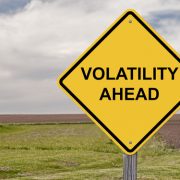Due Diligence Checklist for Self-Directed Real Estate IRA Properties
Real estate deserves consideration in anyone’s long-term investment portfolio. Some investors are content to expose themselves to real estate via REITs and straight-ahead stock companies within a larger retirement portfolio. Many of our own clients find they can get better returns on investment via direct ownership of investment properties within their own retirement accounts, using a Self-Directed IRA, Self-Directed Real Estate IRA, Self-Directed Solo 401(K), Self-Directed SEP IRA or Self-Directed SIMPLE IRA account. They simply use the cash in these accounts to purchase investment property and hold it, with their IRA collecting rents and paying expenses.
After working closely with hundreds of successful Self-Directed IRA landlords – men and women who own real estate directly within their retirement accounts – we have come up with some important hints and tips for finding profitable investment properties with a relatively low degree of risk.
- Compile your own comps. Do not trust the big internet sites like Trulia and Zillow for estimates on what any specific home may be worth. First, everyone else has access to that data, so you will not be at any significant advantage by relying on it. Second, there is no substitute for strong local knowledge of the neighborhood – something that no large nationwide database can provide. Compile your own comps, or work with an agent who has extensive experience with homes in this particular area. Better yet, consult a professional appraiser.
- Hire a building inspector. Most real estate investors – even experienced ones – inspect just a few homes a year at most. A professional building inspector visits hundreds of homes each year. Few ordinary investors can match that kind of experience, which can normally be had for just a few hundred dollars. That experience can also save you from incurring thousands and even tens of thousands of dollars in needed repairs and renovations, which could destroy the profitability of your Self-Directed Real Estate IRA property.
- Work with a title company. This is the most reliable way to ensure that your new Self-Directed Real Estate IRA investment property has a clean title, free of encumbrances from unpaid property taxes, contractors’ liens, old mortgages, claims from heirs and estate beneficiaries, lawsuits and judgments or pledges as collateral.
- Be skeptical of pro forma Occasionally, sellers will show you pro forma accounting documents that show various earnings and profitability projections. These are nice but consider them an absolute ‘best case’ presentation. In 99 percent of actual cases, the Self-Directed Real Estate IRA property will show income and expenses substantially lower than what the pro forma numbers assumed.
- Look over key property management documents. You will want to look at the previous owner’s rent rolls and compare them to bank statements. Do rental collections match the actual bank statements? Are rents claimed on the rent roll but do not show up on actual bank statements? Does the discrepancy match the non-payment rate?
- Account for renters’ deposits. State laws vary, but the general rule is landlords must keep renters’ security deposits in segregated accounts. Before you purchase a rental property, ensure your account for each tenants’ deposit in full and that you have access to these accounts, so you can release them to the renter as required by law, or use them to offset expenses that the deposits are intended to cover.
Interested in learning more about Self-Directed IRAs? Contact American IRA, LLC at 866-7500-IRA (472) for a free consultation. Download our free guides or visit us online at www.AmericanIRA.com.







